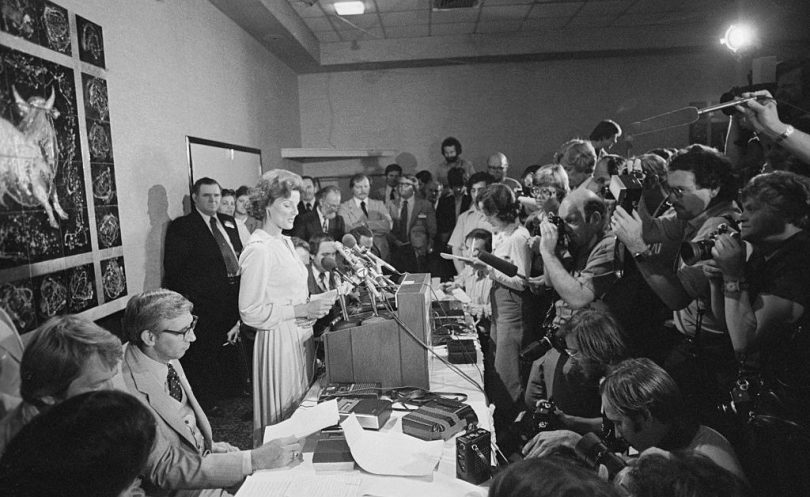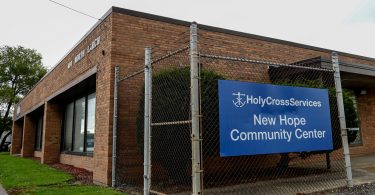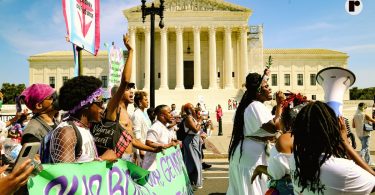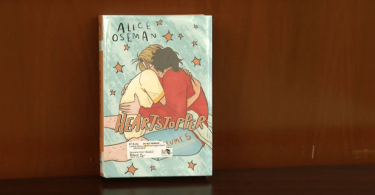On Aug. 8, the Human Rights Campaign (HRC) launched a new push against Project 2025, the 900-plus-page conservative wish-list for a second Trump Administration. The HRC warned that Project 2025 constituted an existential threat to the LGBTQ+ community because it would “take a wrecking ball” to queer rights. The group argued that the Project 2025 Plan urges a second Trump Administration to curtail existing protections in education, employment, and healthcare, as well as institute new policies targeting same-sex couples, transgender people, and LGBTQ+ youth.
Project 2025’s anti-queer proposals are largely based on a single simple and destructive idea: that the LGBTQ+ community is dangerous to children. This claim is nothing new. For almost a century, the idea that the government needed to protect children from queer adults has formed the cornerstone of anti-LGBTQ+ initiatives. Project 2025’s invocation of child protection undermines the basic premise on which America’s LGBTQ+ rights advances were built.
The anti-queer child protection narrative dates back at least to the 1920s, when Americans began equating same-sex sexuality with pedophilia. Psychiatrists popularized the theory that homosexuality was not a behavior or innate identity, but rather a flaw in psychological development. Homosexuals were individuals who were frozen at a pre-adolescent developmental stage. Since homosexuals related to children on a developmental level, psychiatrists reasoned, they were more likely to search them out as sexual partners.
These theories had a significant effect on American law. In the 1930s, when a sex-crime panic swept the nation, 30 states and the District of Columbia responded by enacting sexual psychopath statutes. Under these laws, individuals convicted of sex-related offenses could be committed to psychiatric hospitals, rather than imprisoned. Because lawmakers defined gay men as pedophiles, the queer community fell within the laws’ scope. The result was that gay men, especially, were institutionalized as sexual psychopaths, where they risked being subjected to electroshock therapy to “cure” them of their sexual orientation.
By the middle of the 20th century, the outlook for the LGBTQ+ community was bleak. Every state criminalized consensual sodomy. Homosexuality was defined as a mental illness, which prevented gay and lesbian Americans from obtaining federal employment, serving in the military, or securing custody of their children.
The legal landscape for queer Americans remained grim until the 1970s, when the gay liberation movement inspired men and women around the country to come out and demand their rights. Perhaps no group did more for the movement than lesbian mothers and gay fathers, who increasingly fought for custody of the children they had had with straight ex-spouses. What made these cases so consequential was that, to secure custody rights, queer parents had to challenge child protection rhetoric head-on.
Sarah Hall’s 1974 case exemplified the dangers that queer parents faced. When her ex-husband, David, learned that she was living with another woman, he petitioned the court for custody of their 9-year-old daughter. Sarah contacted the ACLU, which called a leading psychiatric expert to testify that the mother’s sexual orientation would have no effect on the child. David ultimately withdrew his petition.
In courtrooms around the country, other queer parents likewise convinced judges that gay and lesbian people were not harmful to children. They consequently gave rise to greater numbers of visible, queer households.
In the late 1970s, the growing success of the gay and lesbian rights movement prompted the religious right to repackage and modernize the child protection argument. They started presenting homosexuality as a choice—one that children would elect if they were not taught that homosexuality was both dangerous and socially unacceptable. For example, Beverly LaHaye, founder of the national lobbying group Concerned Women for America, warned in 1976 that “[e]very homosexual is potentially an evangelist of homosexuality, capable of perverting many young people to his sinful way of life.”
This child protection rhetoric became a hallmark of the religious right’s politics by the late 1970s, as exemplified by Anita Bryant’s 1977 campaign to convince Miami’s citizens to overturn the county’s sexual orientation anti-discrimination ordinance. Bryant’s “Save Our Children” campaign emphasized the danger of gay and lesbian role models, describing the referendum as necessary to counter “role modeling homosexuals, the ones who aren’t openly recruiting, but who don’t stay in the closet.”
This rhetoric, which emphasized the supposed danger that gays and lesbians posed to children, resonated with more than just Miami residents. After almost 70% of that the county’s voters approved the law’s repeal, other conservative groups launched ballot initiatives around the country. Voters in Wichita, Kan.; Eugene, Ore.; and St. Paul, Minn. overturned their gay rights ordinances the following year. These events inspired California State Senator John Briggs, who introduced a statewide initiative to ban homosexual teachers from public schools. The state’s voters ultimately rejected the ballot measure — but the idea spread to other parts of the country. In 1978, Oklahoma’s legislature enacted a similar law.
In the 1980s, these concerns about child welfare prompted states to institute bans on gay and lesbian foster and adoptive parenting. New Hampshire passed its law in 1987. The bill’s sponsor, Representative Mildred Ingram, claimed that gays and lesbians would model homosexuality, passing it on to their children. Leading New Hampshire Republicans agreed. Former state Supreme Court Justice Charles Douglas analogized same-sex sexuality to other types of learned behavior, explaining: “A friend tells me that if you speak French at home around young children, they grow up learning how to speak French…I think that same principle applies to young children who are raised by foster parents…”
However, as the queer rights movement gained ground, and as more same-sex parents raised straight kids, the role modeling argument became less persuasive. The queer rights movement consequently made important strides, which included securing domestic partnership benefits and anti-discrimination laws. In the early 1990s, advocates were also able to convince school districts around the country that they should teach students that same-sex sexuality was not harmful to children. These educational policies helped reduce bias and bigotry against queer adults. It also made schools more welcoming places for LGBTQ+ students.
In the late 1990s, when the campaign for marriage equality started sweeping the nation, religious conservatives once again developed a new iteration of child protection rhetoric. That claim, known as the “optimal childrearing” argument, was that children fared best in households with both a male and female role model. The problem for its advocates was that it was demonstrably false. Indeed, in marriage equality cases, the American Psychological Association, American Psychiatric Association, and the American Academy of Pediatrics regularly filed briefs attesting that there was “no scientific evidence that parenting effectiveness is related to sexual orientation.” Courts around the country consequently rejected the idea that different-sex parents were, categorically, better role models than same-sex parents.
Project 2025 nevertheless bases its anti-LGBTQ family policies on the optimal childrearing argument. It baselessly states that “[s]ocial science reports that assess the objective outcomes for children raised in homes aside from a heterosexual, intact marriage are clear: All other family forms involve higher levels of instability (the average length of same-sex marriages is half that of heterosexual marriages); financial stress or poverty; or poorer behavioral, psychological, or educational outcomes.” It uses this flawed argument to conclude that government-funded programs “should affirm that children require and deserve both the love and nurturing of a mother and the play and protection of a father.”
The conservative presidential transition plan’s other anti-LGBTQ+ arguments are also rooted in child protection rhetoric. Project 2025 calls for the elimination of sexual orientation and gender identity protections in education and employment to prevent children from electing a harmful transgender identity. Much like Anita Bryant in 1977, who called on Miami’s citizens to save their children from the “homosexual lifestyle,” Project 2025 frames LGBTQ+ adults as dangerous role models.
The Trump campaign has tried to distance itself from Project 2025, which was produced by the Heritage Foundation, a conservative think tank. Indeed, the former President has denied any involvement in the initiative and claimed not to know anything about it. However, Project 2025’s drafters included at least 140 Trump officials, including six former cabinet members.
Project 2025 contains numerous anti-LGBTQ+ provisions. But for queer Americans and their allies, the document’s danger is not just the specific proposals: it is its framing of LGBTQ+ identity as harmful to children. This child protection rhetoric is a proverbial bad penny, turning up again and again to impede queer people’s rights. But each time, the LGBTQ+ community has managed to defeat the argument—and has gained new rights in the process.
Marie-Amélie George is a professor at Wake Forest University School of Law and an expert on LGBTQ+ legal history. She is the author of Family Matters: Queer Households and the Half-Century Struggle for Legal Recognition.
Made by History takes readers beyond the headlines with articles written and edited by professional historians. Learn more about Made by History at TIME here. Opinions expressed do not necessarily reflect the views of TIME editors.







